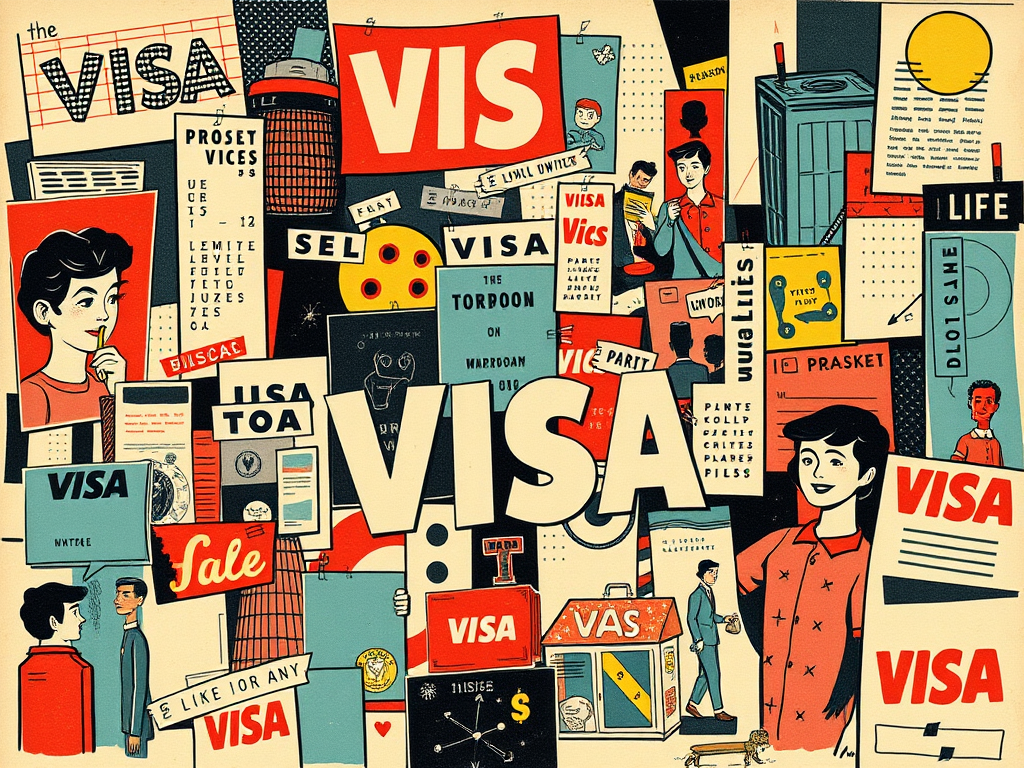
Golden Visa vs. Digital Nomad Visa: Which Suits Your Lifestyle Best?
Reading time: 12 minutes
Table of Contents
- Introduction
- Understanding Golden Visas
- The Rise of Digital Nomad Visas
- Comparing Golden Visas and Digital Nomad Visas
- Economic Impact of Visa Programs
- Case Studies: Success Stories and Challenges
- Future Trends in Global Mobility
- Conclusion
- FAQs
Introduction
In an increasingly interconnected world, the concept of global mobility has evolved dramatically. Two visa programs that have gained significant traction in recent years are the Golden Visa and the Digital Nomad Visa. These programs cater to different lifestyles and economic objectives, offering unique opportunities for individuals seeking to live and work abroad. This comprehensive analysis will delve into the intricacies of both visa types, comparing their benefits, requirements, and economic implications.
Understanding Golden Visas
Golden Visas, also known as investor visas or citizenship by investment programs, have become a popular mechanism for countries to attract foreign capital and high-net-worth individuals. These programs typically offer residency rights or even citizenship in exchange for significant investments in real estate, government bonds, or local businesses.
Key Features of Golden Visas
- Substantial Investment Requirements: Most Golden Visa programs require investments ranging from €250,000 to several million euros, depending on the country.
- Path to Permanent Residency or Citizenship: Many programs offer a clear route to long-term residency or citizenship after a specified period.
- Family Inclusion: Often, the investor’s immediate family members can also benefit from the visa.
- Minimal Physical Presence Requirements: Many Golden Visa programs have relatively low residency requirements, allowing investors to maintain their primary residence elsewhere.
For instance, if you’re considering to buy house in greece, the country’s Golden Visa program requires a minimum real estate investment of €250,000, offering residency rights with the potential for citizenship after seven years.
Economic Impact of Golden Visas
Golden Visa programs have had a significant impact on host countries’ economies, particularly in the real estate sector. For example, Portugal’s Golden Visa scheme, launched in 2012, has attracted over €6 billion in investments, primarily in real estate. This influx of capital has contributed to urban regeneration in cities like Lisbon and Porto, but has also raised concerns about housing affordability for local residents.
The Rise of Digital Nomad Visas
As remote work becomes increasingly prevalent, many countries have introduced Digital Nomad Visas to attract talented professionals who can work from anywhere. These visas cater to a new generation of mobile workers seeking flexibility and diverse cultural experiences.
Key Features of Digital Nomad Visas
- Lower Financial Requirements: Compared to Golden Visas, Digital Nomad Visas typically have more modest income or savings requirements.
- Temporary Nature: These visas are usually valid for 6-12 months, with some countries offering extensions.
- Work Restrictions: Digital Nomad Visas generally prohibit working for local companies, focusing instead on remote work for foreign employers or self-employment.
- Tax Implications: Many Digital Nomad Visa programs offer favorable tax treatment, at least for short-term stays.
Countries like Estonia, Croatia, and Barbados have been at the forefront of offering Digital Nomad Visas, recognizing the potential economic benefits of attracting skilled professionals, even on a temporary basis.
Comparing Golden Visas and Digital Nomad Visas
While both visa types facilitate international mobility, they cater to distinctly different demographics and objectives. Let’s examine the key differences:
Investment vs. Income
Golden Visas require substantial upfront investments, often in real estate or government bonds. In contrast, Digital Nomad Visas typically require proof of stable income or sufficient savings to support oneself during the stay. This fundamental difference reflects the distinct economic goals of each program: Golden Visas aim to attract capital and potentially permanent residents, while Digital Nomad Visas focus on temporary, skilled visitors who can contribute to the local economy through their spending.
Long-term vs. Short-term
Golden Visas are designed with long-term residency or citizenship in mind. They often provide a clear path to permanent status after a specified period, usually 5-7 years. Digital Nomad Visas, on the other hand, are inherently temporary, typically lasting 6-12 months with the possibility of renewal. This difference reflects the contrasting lifestyles of investors seeking a second home or retirement destination versus digital professionals desiring flexibility and diverse experiences.
Family Considerations
Golden Visa programs frequently include provisions for family members, allowing investors to obtain residency rights for spouses and dependent children. Digital Nomad Visas, given their temporary nature, often have more limited family inclusion options. Some countries do allow partners or spouses to accompany the primary visa holder, but this is not universal across all Digital Nomad Visa programs.
Economic Impact of Visa Programs
Both Golden Visas and Digital Nomad Visas have significant economic implications for host countries, albeit in different ways.
Golden Visa Economic Effects
Golden Visa programs have been particularly impactful in the real estate sector. Countries like Portugal, Spain, and Greece have seen substantial foreign investment in property markets, leading to increased construction activity and rising property values in prime locations. This has had both positive and negative effects:
- Positive: Injection of foreign capital, urban regeneration, increased tax revenue
- Negative: Potential housing market distortions, concerns about money laundering
For example, in Portugal, Golden Visa investments have contributed to the revitalization of historic city centers but have also been criticized for exacerbating housing affordability issues for local residents.
Digital Nomad Visa Economic Effects
Digital Nomad Visas, while not generating large-scale investments, contribute to local economies through consistent spending on accommodation, food, and services. Key economic impacts include:
- Boost to tourism-related businesses, especially in off-peak seasons
- Potential knowledge transfer and networking opportunities with local professionals
- Increased demand for co-working spaces and short-term rentals
Countries like Estonia have positioned themselves as digital-friendly destinations, leveraging their Digital Nomad Visa programs to attract tech-savvy professionals and potentially spur innovation in their local startup ecosystems.
Case Studies: Success Stories and Challenges
Golden Visa Success: Portugal
Portugal’s Golden Visa program, launched in 2012, has been one of Europe’s most successful. Key statistics include:
- Over €6 billion in investments attracted since inception
- Approximately 10,000 main applicants and 17,000 family members granted residency
- Significant boost to the real estate market, particularly in Lisbon and Porto
However, the program has faced criticism for its impact on local housing affordability and has undergone revisions to redirect investments to interior regions and job creation projects.
Digital Nomad Visa Success: Estonia
Estonia, leveraging its reputation as a digital-forward nation, launched its Digital Nomad Visa in 2020. Early results include:
- Over 3,000 applications received in the first year
- Increased visibility for Estonia as a tech-friendly destination
- Boost to local digital infrastructure and co-working spaces
The program has helped Estonia maintain its position as a leader in digital governance and attract global talent to its growing tech sector.
Future Trends in Global Mobility
As we look to the future, several trends are likely to shape the evolution of both Golden Visa and Digital Nomad Visa programs:
Increasing Scrutiny and Regulation
Golden Visa programs, in particular, are facing growing scrutiny from international bodies concerned about potential abuse for money laundering or tax evasion. This may lead to stricter due diligence processes and potentially higher investment thresholds.
Integration of Remote Work Policies
The success of Digital Nomad Visas may influence traditional work visa policies, with more countries likely to incorporate remote work provisions into their immigration frameworks.
Focus on Sustainability
Both types of visa programs may increasingly incorporate sustainability criteria, such as investments in green technology for Golden Visas or eco-friendly coworking spaces for Digital Nomad Visas.
Hybrid Models
We may see the emergence of hybrid visa models that combine elements of both Golden Visas and Digital Nomad Visas, catering to high-skilled professionals willing to make moderate investments for longer-term residency rights.
Conclusion
The choice between a Golden Visa and a Digital Nomad Visa ultimately depends on individual circumstances, financial capacity, and lifestyle preferences. Golden Visas offer a path to long-term residency or citizenship through significant investment, ideal for those seeking a second home or planning for retirement. Digital Nomad Visas, on the other hand, cater to the growing cohort of location-independent professionals seeking flexibility and diverse cultural experiences.
Both visa types have demonstrated their ability to attract foreign capital and talent, contributing to host countries’ economies in different but meaningful ways. As global mobility continues to evolve, we can expect these visa programs to adapt, potentially converging in some aspects while maintaining their distinct appeal to different demographics.
For individuals considering international relocation or investment, it’s crucial to carefully evaluate personal goals, financial situations, and long-term plans. Whether opting for the stability and potential returns of a Golden Visa or the flexibility and cultural immersion of a Digital Nomad Visa, thorough research and professional advice are essential to making an informed decision in this complex landscape of global mobility.
FAQs
- Can I work locally with a Golden Visa?
Answer: Generally, yes. Most Golden Visa programs allow holders to work or start businesses in the host country. However, specific rules may vary by country, so it’s important to check the details of each program. - Are Digital Nomad Visas renewable?
Answer: Many Digital Nomad Visa programs offer the possibility of renewal, but policies vary by country. Some may allow multiple renewals, while others may have a maximum total stay duration. - Do I need to pay taxes in the country that issued my Digital Nomad Visa?
Answer: Tax obligations can be complex for digital nomads. While some countries offer tax exemptions for short stays, others may require you to pay taxes if you become a tax resident. It’s crucial to consult with a tax professional familiar with international tax laws. - Can I apply for citizenship with a Digital Nomad Visa?
Answer: Digital Nomad Visas typically do not lead directly to citizenship. They are designed for temporary stays. For pathways to citizenship, Golden Visa programs or traditional immigration routes are more suitable. - How do Golden Visa investments affect local property markets?
Answer: Golden Visa investments can significantly impact local property markets, often leading to increased demand and rising prices in popular areas. While this can boost the construction sector and overall economy, it may also contribute to affordability issues for local residents, especially in major cities.

Article reviewed by Annice Schmeler, Head of Investment Properties | Commercial Real Estate Strategist | Delivering 20%+ Annual ROI for Clients, on March 28, 2025
